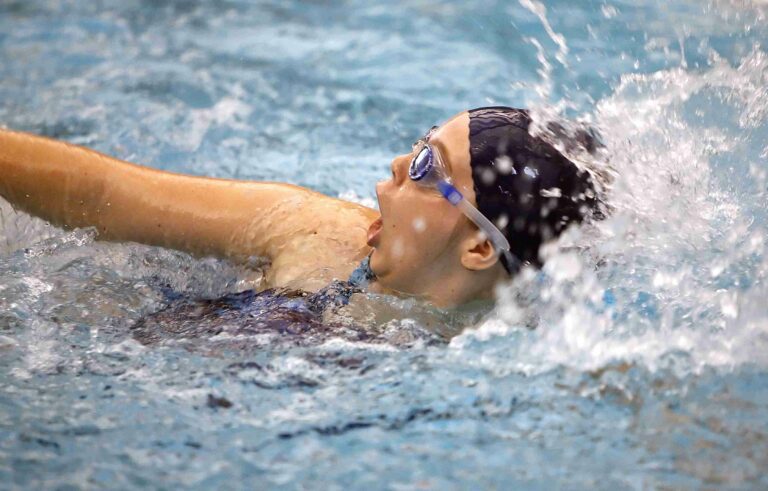A new case-study that could shed further light on unexplained medical incidents, sometimes fatal, involving open-water swimmers including scuba divers and snorkellers has just been published in British Medical Journal Case Reports.
Also Read: DDRC needs divers’ help on lungs
Based on analysis of an open-water swimmer’s experience, the doctors behind the report say they want to raise awareness among both medical staff and water-users of what remains a relatively little-known condition. “This is certainly relevant to scuba divers and snorkellers,” cardiologist Dr James Oldman, one of the authors, told Divernet.
Fluid on the lungs occurring in open water, known as Immersive Pulmonary Oedema or IPO (IPE in the study), is known to have caused a number of past incidents among water-users, including people who were otherwise fit and healthy.
When fatalities occur, there is a danger of IPO going unrecognised because the signs resemble those of drowning through intake of water.
Risk factors
Risk factors include older age, swimming long distances, cold water, being female, high blood pressure and pre-existing heart disease, according to Dr Oldman and the other cardiologists from Royal United Hospitals Bath NHS Foundation Trust and University of Bath who have produced the study.
Open-water swimming had more than 3 million adherents in England alone in 2021, according to the report, which points to mounting evidence of a link between the activity and Swimming Induced Pulmonary Oedema (SIPO). The doctors say that the condition affects an estimated 12% of open-water swimmers but reckon that cases are likely to be under-reported.
’I undid my wetsuit and immediately felt the sensation of my lungs filling with fluid. I started to cough and had a metallic taste in my mouth’
The woman in the case study was a competitive long-distance swimmer in her 50s who was otherwise fit and well. “While swimming in a quarry at a night-swim I started to hyperventilate and realised I couldn’t swim any further,” she said. This happened after she had swum about 300m in the 17° water. “Luckily, I was able to call for help and got guided back to the quay by a paddle-boarder.
“When I got out, I undid my wetsuit and immediately felt the sensation of my lungs filling with fluid. I started to cough and had a metallic taste in my mouth. When I got into the light, I could see my sputum was pink and frothy.
“I was very lucky to be surrounded by a great team at the quarry who all knew I had SIPO. My husband drove me to the emergency department where I underwent an ECG, chest X-ray, bloods and CT pulmonary angiogram. Throughout the evening I passed urine frequently for about 10 hours until the cough stopped and I was discharged home.”
Two weeks earlier, the woman had suffered a “much milder event” while swimming in the sea but had not attributed this to SIPO at the time. After this she had experienced difficulty in her normal running and pool swimming training. “I had just assumed I was a bit under the weather,” she said. “I have had no other symptoms and am now fully recovered and back to full training.”
Heart muscle
The authors of the case-study say that when taken to hospital the swimmer’s heartbeat had remained rapid. The chest X-ray had revealed pulmonary oedema, with further scans showing that fluid had infiltrated the heart muscle (myocardial oedema), although she showed no signs of heart disease. Her symptoms had settled within two hours of arrival at hospital.
Recurrence is common, having been reported in 13-22% of affected scuba divers and swimmers
Although still not fully understood, SIPO is thought likely to come about through increases in arterial pressure in the lungs secondary to centralisation of blood volume in a cold environment, combined with an exaggerated constriction of these blood vessels in response to the cold, and increased blood-flow during physical exertion.
A concern is that recurrence is common, say the authors, having been reported in 13-22% of affected scuba divers and swimmers. This suggests that these people might be predisposed to the condition and need to take appropriate precautions.
Tips offered for minimising the risk include swimming at a slower pace, being accompanied by a buddy, choosing to swim in warmer water, avoiding tight-fitting wetsuits and also avoiding use of non-steroidal anti-inflammatories such as Ibuprofen.
For anyone experiencing symptoms for the first time, the doctors recommend stopping swimming immediately, getting out of the water as soon as possible, sitting upright and calling for medical assistance if required.
Guidance for divers
“The UK Diving Medical Committee [UKDMC] has published guidance for divers – however, at present, there are no formal national medical guidelines concerning the recognition and management of this complex condition,” say the authors, who want clinicians to recognise the possibility of IPO in any open-water swimmer presenting with breathlessness.
In scuba divers over-hydration has been suggested as a possible factor in IPO, as reported on Divernet in 2018 – although determining suitable intake of liquids can be problematic given that hydration is a factor in avoiding decompression illness.
Breathing through a snorkel when swimming can present its own IPO-associated complications, as highlighted in a recent report from Hawaii, where a high number of unexplained snorkelling deaths continue to occur. The findings of the Hawaii Safety Study have been reported in detail on Divernet.
The UKDMC has posted recommendations on IPO in scuba divers and the British Sub-Aqua Club also provides guidance. The BMJ case report can be read in full here.
Also on Divernet: Diving Instructor Cleared In ‘Safety-Stop’ Death Case

